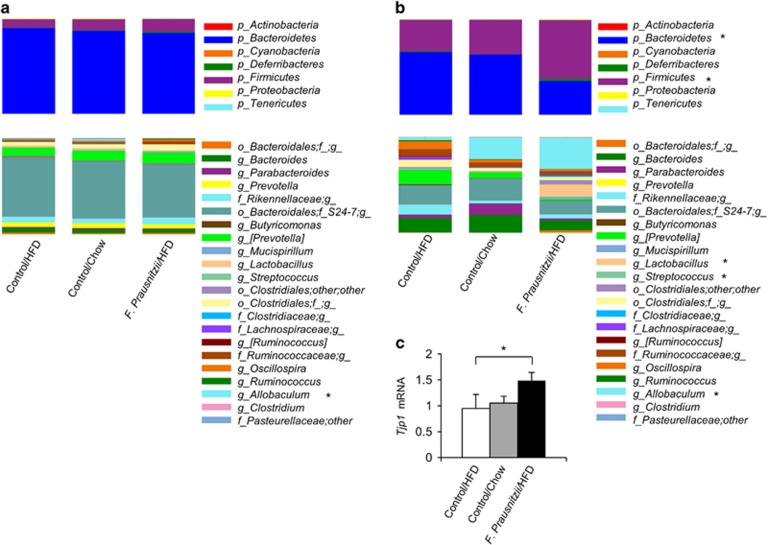Figure 6.
F. prausnitzii treatment changes the gut microbiota composition. (a) Pretreatment stool samples. No phylum level differences were seen between the treatment groups. The genus Allobaculum being higher in chow control mice than in HFD control and F. prausnitzii-treated mice. (b) Post-treatment colon content samples. Compared to the HFD control group, the amount of phylum Bacteroidetes was significantly lower and the abundance of Firmicutes was significantly higher in the F. prausnitzii-treated mice. In addition, phylum Cyanobacteria was more abundant in chow control mice than in HFD control and F. prausnitzii-treated mice (P<0.05 for both). The abundances of genera Lactobacillus and Streptococcus increased in F. prausnitzii-treated mice compared to the HFD and normal chow controls. In addition, genus Allobaculum, which was not prevalent in the HFD controls, was highly abundant in the majority of the normal chow controls and in all F. prausnitzii-treated mice. (c) The expression of Tjp1 mRNA. Mean values ±s.d. are presented. n was 3–5 per group. The statistical significance was set to P<0.05 and the significant differences are presented with * next to the name of the bacteria. mRNA, messenger RNA.

